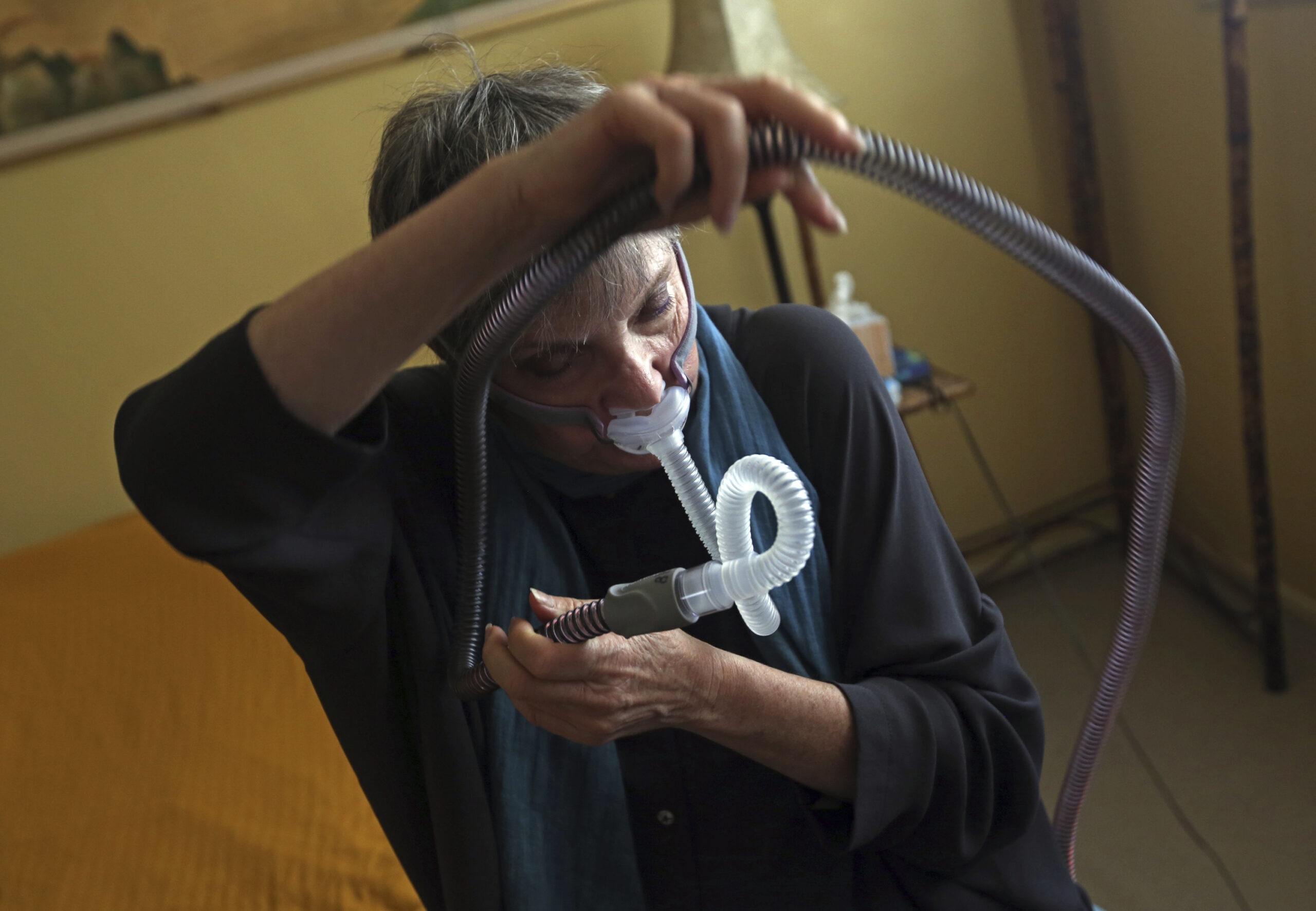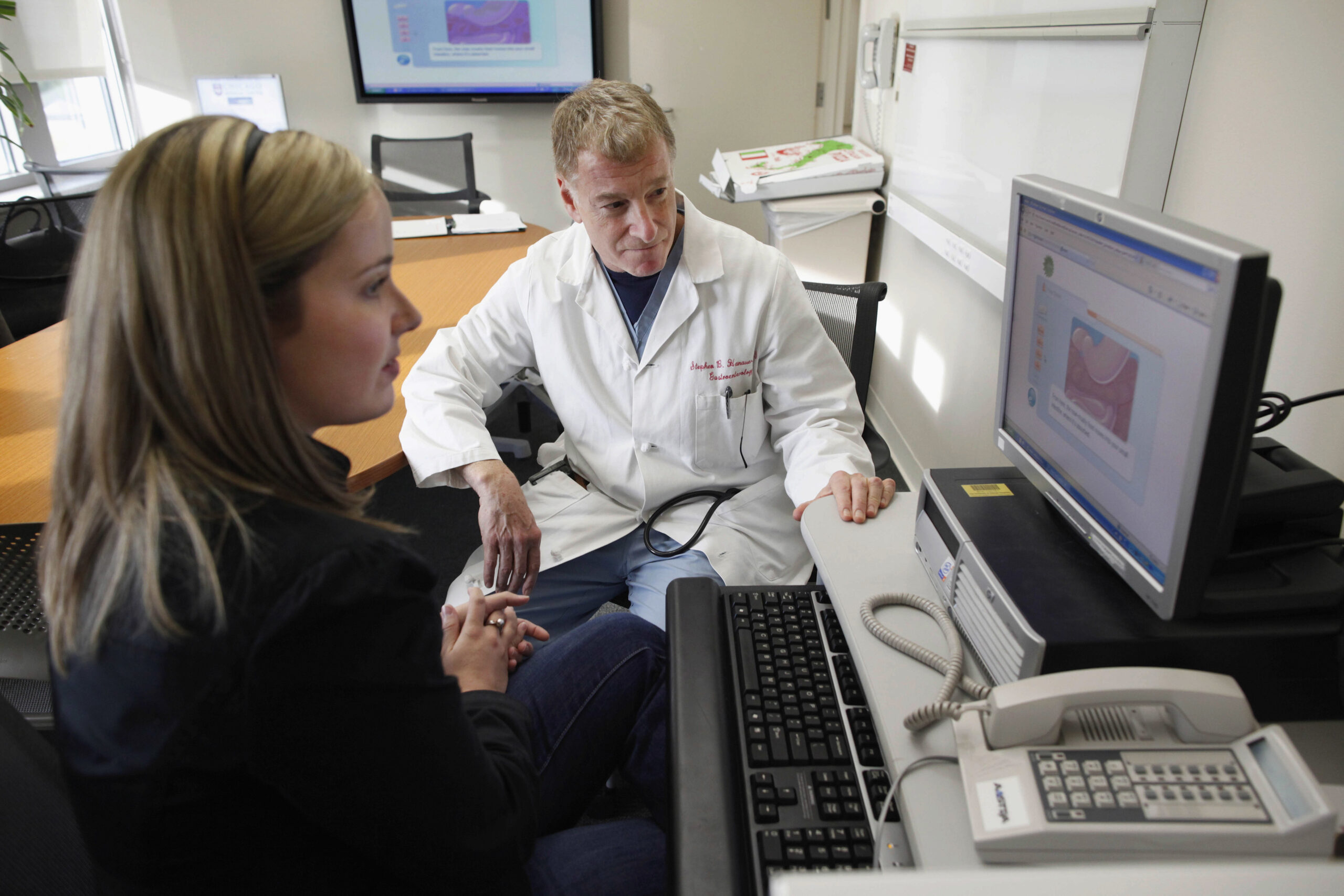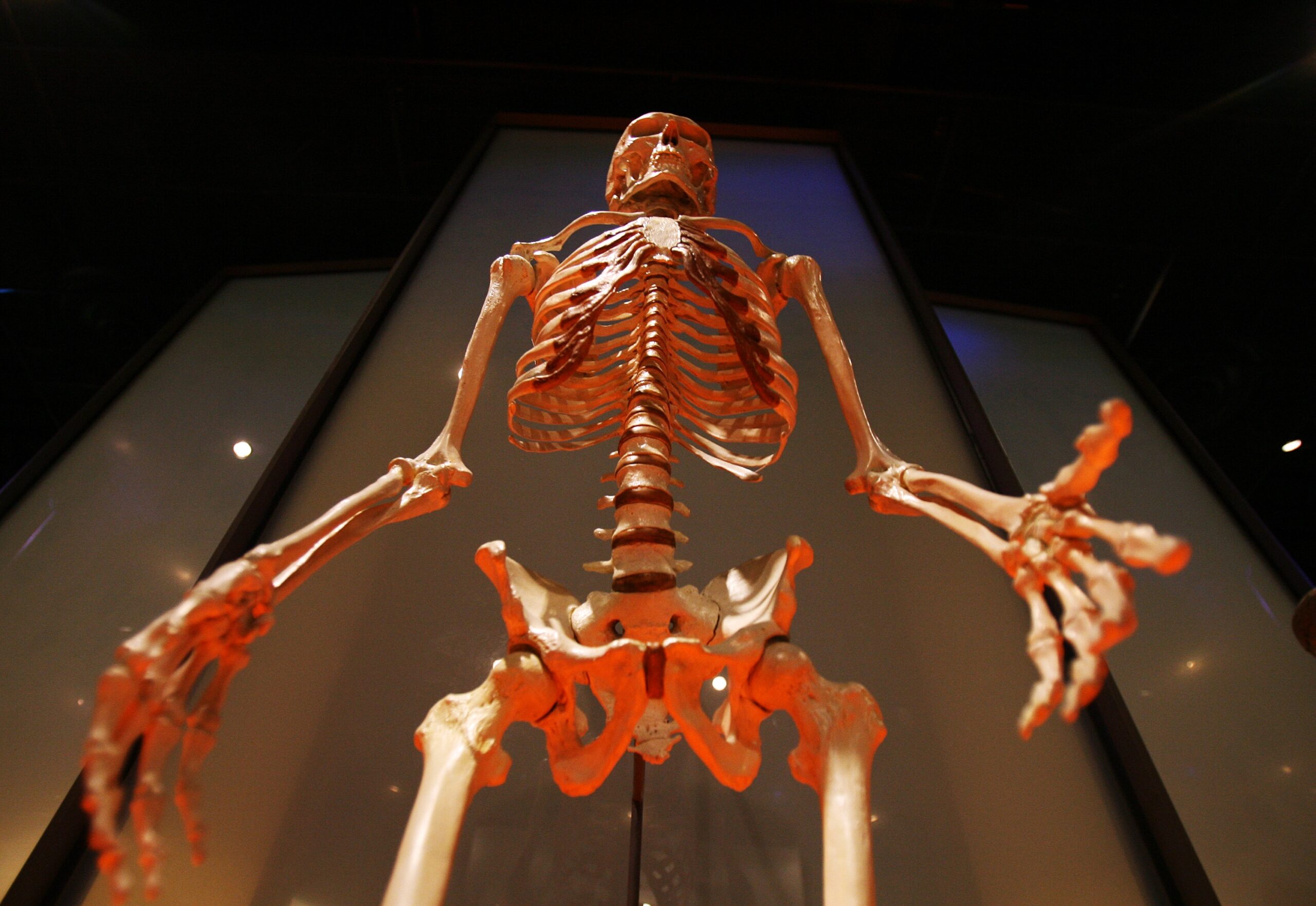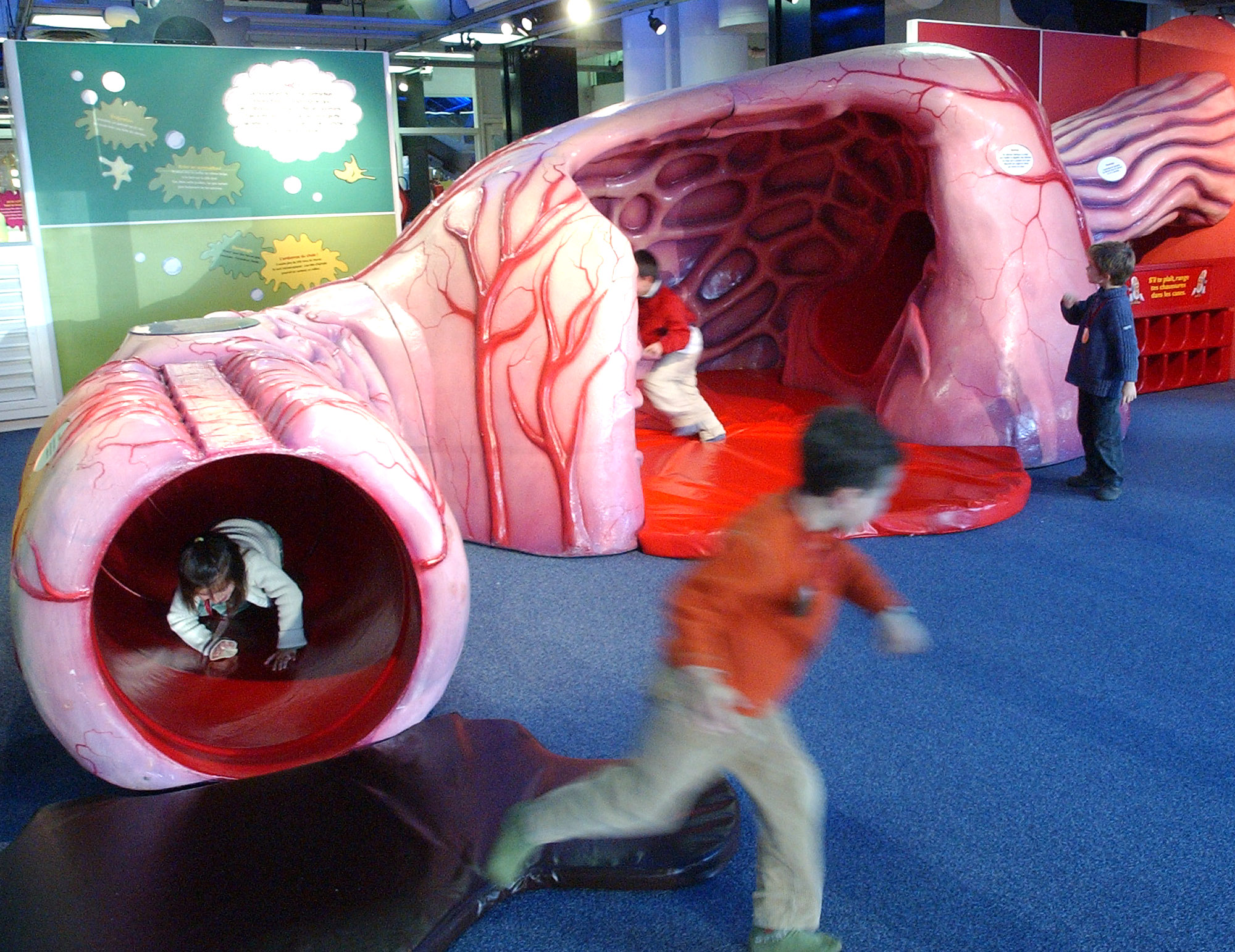Throughout the second week of February, Wisconsin Public Radio’s “The Morning Show” produced a series exploring innovations and advice in medicine. Each day, the series examined a different part of the body: the brain, the heart, the lungs, the gut and the musculoskeletal system.
Here are the top takeaways for each part of the body.

News with a little more humanity
WPR’s “Wisconsin Today” newsletter keeps you connected to the state you love without feeling overwhelmed. No paywall. No agenda. No corporate filter.
The Brain
Dr. Leigh Hochberg is a neurologist who leads the Center for Neurotechnology and Neurorecovery at Massachusetts General Hospital and directs a research team that is developing technology for brain-computer interfaces. He said the devices can help people with spinal cord injuries that result in the inability to move one’s arms or legs, as well as people with ALS or a brainstem stroke.
The Centers for Disease Control and Prevention estimates an average of 5,000 new cases of ALS are diagnosed each year.
“I think the potential for this field is substantial,” Hochberg said.
Last summer, Dr. Shahram Majidi implanted a device on the brain of a patient with severe paralysis from ALS, the progressive nervous system disease also known as Lou Gehrig’s disease. The procedure to implant the device was the first of its kind in the nation. Since then, Majidi said he has worked to implant devices in the brains of two other patients as part of the safety and feasibility stage of a clinical trial.
“We are very hopeful that this will be the beginning of a new era,” said Majidi, a professor at the Icahn School of Medicine at Mount Sinai in Brooklyn.
Brain-computer interface devices aim to allow performing some actions by thought alone, according to a Bloomberg report on the breakthrough patient. The devices translate brain activity into commands on a computer.
Majidi said after a few weeks of training, his patients can send a text message, shop online and notify a caregiver if they need help.
“I think that is a significant improvement in quality of life for someone who is bedridden and completely disconnected from the outside world,” he said.
READ MORE: How brain implants are seeking to transform lives

The Heart
The risk factors for heart disease run far and wide and can affect anyone.
Dr. Ivor Benjamin is director of the Cardiovascular Center at the Medical College of Wisconsin. He pointed to hypertension, diabetes, high cholesterol and obesity as some of the prominent health troubles that could lead to complications in the heart.
Excessive alcohol consumption — a problem particularly prevalent in Wisconsin — also has harmful effects on the heart, he said. These effects range from circuitry alterations that lead to arrhythmias to toxic effects directly to heart cells, such as the heart’s muscle and lining.
“The more risk factors you have, the greater your risk for developing a problem,” said Dr. Robert Wilson, a cardiologist with the Appleton-based Heart and Vascular Institute of Wisconsin.
The most common heart problem is coronary artery disease. But Wilson said the broad category of heart troubles show up by way of heart attacks and peripheral arterial disease, also known as PAD.
READ MORE: 2 Wisconsin cardiologists explain how to look out for your heart

The Lungs
Millions of people unknowingly have sleep apnea, said Dr. William Ehlenbach, associate medical director for pulmonology and sleep medicine at SSM Health Dean Medical Group. The sleep disorder can cause problems if left untreated.
Symptoms of sleep apnea include daytime sleepiness and not feeling refreshed after waking up in the morning. Some people with sleep apnea fall asleep even when they don’t mean to, which can be dangerous for drivers.
Bed partners should look out for loud snoring and pauses in breathing. Ehlenbach estimated half of people who snore have sleep apnea.
“Everyone with obstructive sleep apnea snores, but not everyone who snores has obstructive sleep apnea,” he said.
While studies in a lab were previously the only way to reliably diagnose sleep apnea, Ehlenbach said technology has improved enough over the last 15 years to allow for at-home studies — although lab studies may be more comprehensive.
“This is one exciting area where I think the technology is improving,” he said. “It reduces the barrier to people getting evaluated for sleep apnea, which is so important.”
Once diagnosed, continuous positive airway pressure, or CPAP, machines are the most effective treatment for this disorder, Ehlenbach said. The machines have become smaller and quieter. Masks have become more comfortable, too.
“For most people, sleep apnea is a chronic condition (that) will be with them for the rest of their life,” he said.
READ MORE: Wisconsin pulmonology doctors weigh in on undiagnosed sleep apnea, medication costs

The Gut
Dr. Poonam Beniwal-Patel, a gastroenterologist at Froedtert Hospital, said she gets a lot of questions about gut bacteria as the topic of digestive health has become trendier over the last few years.
The roughly 100 trillion microbes in the gut include bacteria, fungi and protozoa — and researchers are learning more and more about how gut bacteria affects human health, she said. Particularly, the medical community is getting a better grasp on how gut bacteria affects the immune system.
“There have been associations between certain gut bacteria and medical conditions, including mental health, obesity, cardiovascular disease and neurologic disease,” she said. “So, probably the best way to have healthy gut bacteria is to make sure that you eat a balanced diet and also partake in regular exercise.”
She encouraged eating foods that are low in salt and saturated fats. She said to eat healthy fats, fruits, vegetables and whole grains. And it’s a good idea to eat some fermentable foods, such as yogurt, kimchi or kombucha.
Probiotic pills might be popular, but Beniwal-Patel said there isn’t one pill that works for everyone.
“If you look at healthy people around the world, you’ll find that people have different bacteria in their (gastrointestinal) tract,” she said. “Part of that depends upon what we eat, the environment (and) genetics.”
READ MORE: Wisconsin gastroenterologist warns about rising rate of colon cancer in people under 50

Musculoskeletal system
Asked if patients should consider steroids or injections for strained tendons, Dr. Dan Malone from the Columbus Community Hospital called the question “a real can of worms.”
While a single injection is reasonable to try for many people, sometimes that only kicks the can down the road, the rheumatologist said. Symptoms might return in months.
“Steroids are great, but they don’t cure the problem in some cases,” Malone said. “For recurrences of the same condition, that’s where the world of so-called ‘orthobiologic‘ treatments come in. I’m a believer in orthobiologic treatments not for every ache and pain but for some conditions.”
Orthobiologic treatments involve using the patient’s own body fluids, such as platelet-rich plasma, Malone said. The method can help heal frayed tendons when other treatments fail, and there are few downsides, he said.
Orthobiologic treatments can be used on broken bones and injured muscles and ligaments, as well, according to the American Academy of Orthopedic Surgeons.
“It’s worth a try,” Malone said.
READ MORE: Rheumatologist suggests orthobiologic treatment as low-risk method to help tendons
Wisconsin Public Radio, © Copyright 2026, Board of Regents of the University of Wisconsin System and Wisconsin Educational Communications Board.
